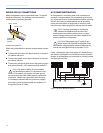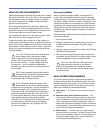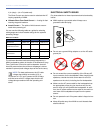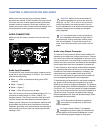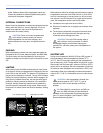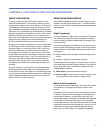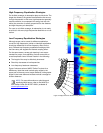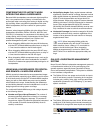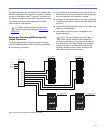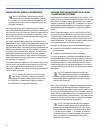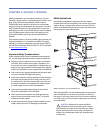
CHAPTER 4: LINE ARRAYS AND SYSTEM INTEGRATION
22
SYSTEM DESIGN PRINCIPLES
Line array designs seek to achieve the following:
■ Uniform vertical coverage
■ Uniform SPL
■ Uniform frequency response
■ Sufficient SPL and headroom for the application
To achieve these objectives, fine-tuning a design for MINA
arrays is dependent on three factors:
■ Number of Array Elements: For smaller arrays, the
number of elements affects the SPL and headroom avail-
able from the system, as well as the uniformity of cover-
age in both SPL and frequency response. The number of
elements affects directivity at lower frequencies.
■ Vertical Splay Angles: Changing the splay angles
between cabinets significantly impacts vertical coverage
for high frequencies, with narrower vertical splay angles
producing a higher Q vertical beamwidth, and wider
splay angles yielding a lower Q. In general, splay angles
do not affect vertical coverage for lower frequencies.
■ Horizontal Coverage: Horizontal coverage for a single
MINA array is constant, regardless of the number of
array elements or the angles between them.
Achieving these objectives is a multi-step process with dif-
ferent strategies:
■ Lower and higher frequencies
■ Long throws and short throws
NOTE: MAPP Online Pro allows you to accu-
rately predict coverage. For more information,
see Chapter 7, “System Design and Integration
Tools.”
High-Frequency Design Strategies
For far-field coverage, smaller splay angles between cabi-
nets achieves superior throw through better coupling.
Longer throws require more elements with smaller splay
angles at the top of the array.
For near- to mid-field coverage, larger splay angles can be
used to increase vertical coverage.
Low-Frequency Design Strategies
While wave guides provide isolated control over various mid-
to high-frequency coverage areas, the low-frequency section
of MINA arrays makes use of mutual coupling — with equal
amplitude and phase — to achieve better directivity.
Low-frequency directivity is dependent on the number of
elements in the array. At low frequencies, arrays with more
elements (longer) provide more directivity and more SPL in
this range. An array’s maximum directivity is achieved when
the array’s length is equal to or greater than the wavelength
of the frequencies being reproduced by the array.
NOTE: For more information on basic system
design methods, refer to the MINA System
Startup Guide (PN 05.207.100.01) available at
www.meyersound.com
.
OPTIMIZING AND EQUALIZING ARRAYS
Once the basic design of an array (number of elements, ver-
tical splay angles between cabinets, and horizontal splay
angles between arrays) has been determined with MAPP
Online Pro, you can optimize the array by driving it with mul-
tiple equalization channels, or zones. Typically arrays are
divided into two or three zones, depending on the design
and size of the array.
To optimize and equalize an array, different strategies are
required for:
■ High frequencies
– long throws
– short throws
■ Low frequencies



